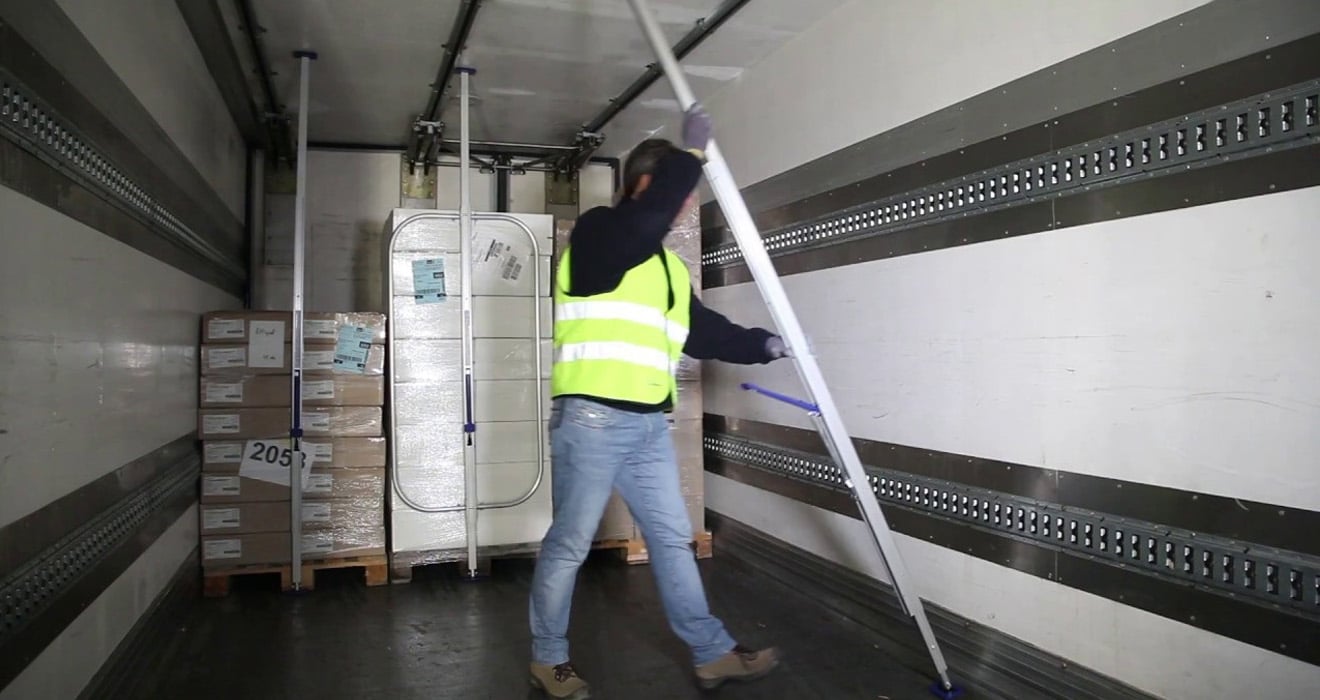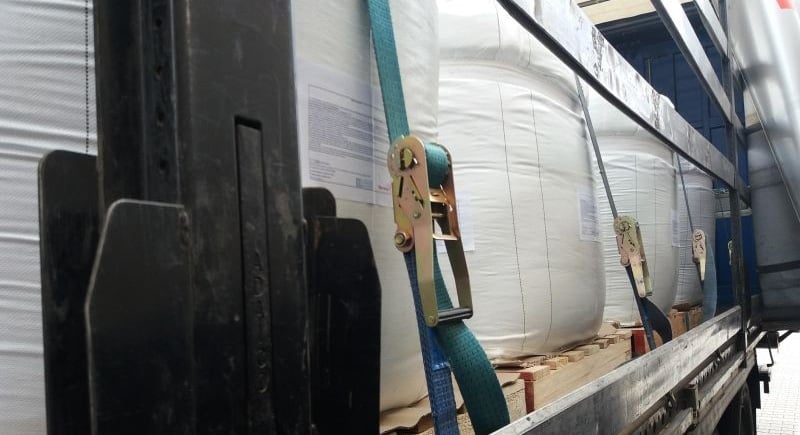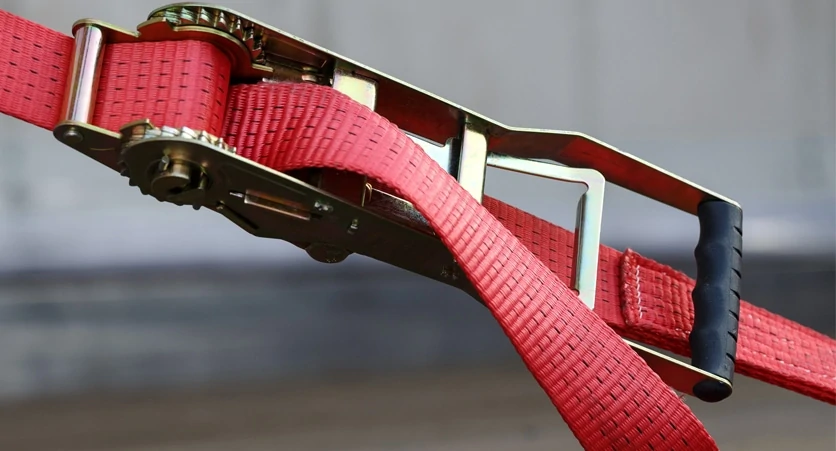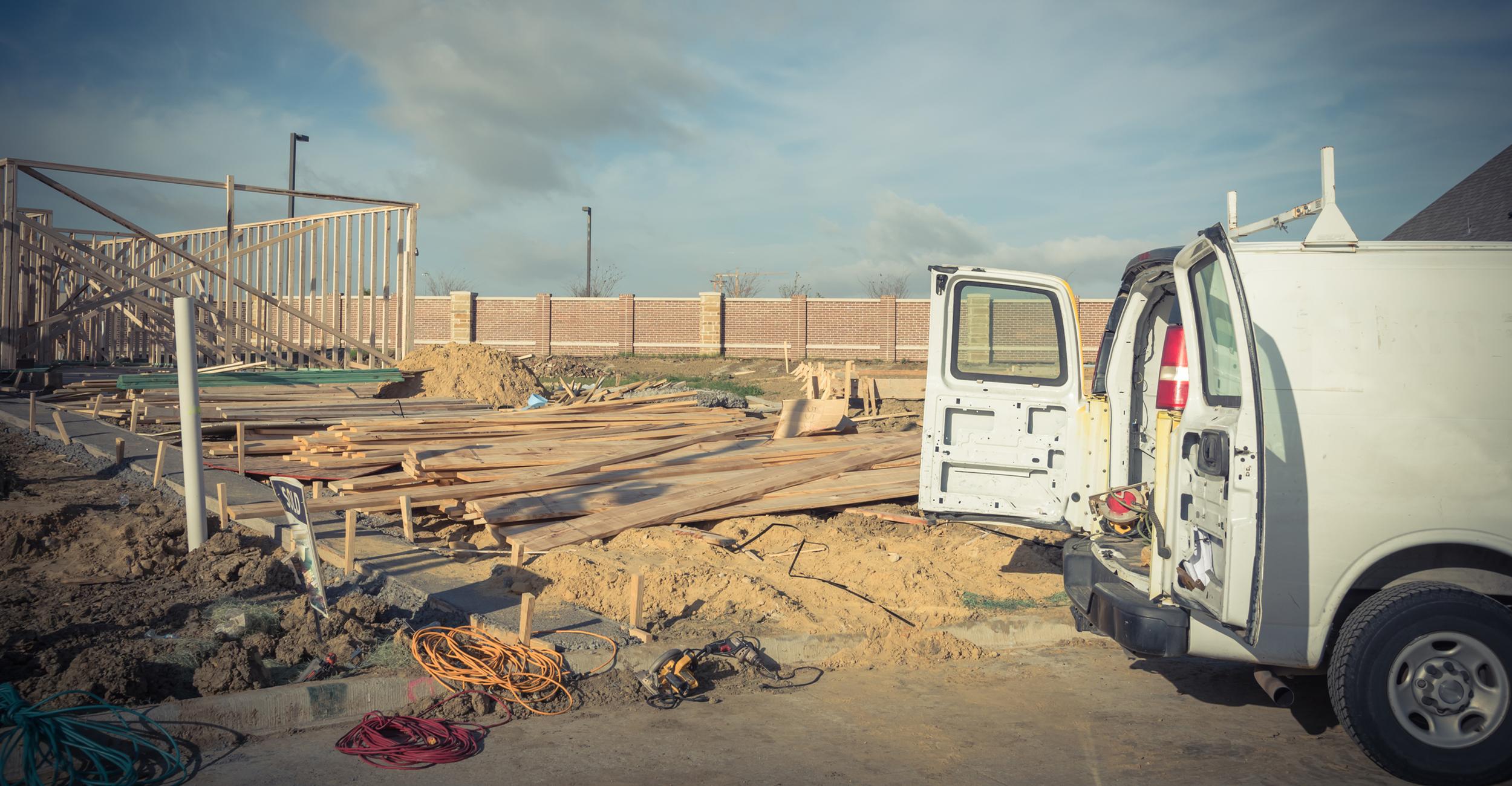
Tension chains; what should you pay attention to when securing cargo?
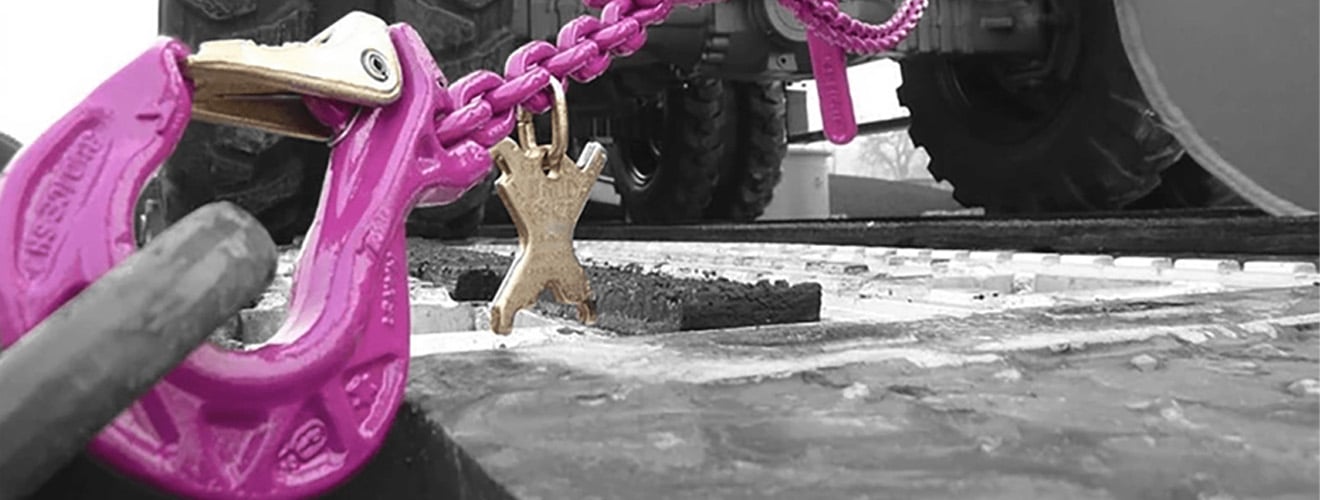
What does the EN 12195-3 standard say about tensioning chains?
The EN 12195-3 standard specifies lashing devices for tensioning chains for loads on road vehicles. Below I explain what this means.
Mark
When you use lashing chains to secure cargo, according to the EN 12195-3 standard they must be marked with a metal plate (tag) bearing the following information;- the lashing capacity (LC) in kiloNewton;
- the standard tension force STF in (decaNewtons) for which it is designed;
- for multi-purpose ratchet hoists: indication of the maximum manual force to achieve WLL;
- the type of lashing;
- a warning: 'Not for hoisting';excluded multi-purpose ratchet hoists.
- manufacturer's or supplier's name or symbol;
- traceability code of the manufacturer;
- European standard, EN 12195-3;
- tensioners must be marked with the name or symbol of the manufacturer or supplier.
Manufacturer's certificate
Each lashing chain or set of lashing chains must have a dated certificate stating that the product complies with EN 12195-3. The certificate must also contain at least the following information:
- the name of the manufacturer or supplier of the lashing chain including date of issue of the certificate and signature;
- number and part of the European standard: EN 12195-3;
- identification number or symbol of the lashing chain;
- description of the lashing chain, including a list of all parts;
- the nominal size of the chain and class designation;
- nominal size (code no.) and class designation of parts for different types;
- nominal length; lashing capacity (LC).
In practice, I come across the above listed information too rarely or not at all. In my opinion, this is unacceptable and highly irresponsible. This should actually be addressed. The EN 12195-3 standard is in the 2014/47 directive (roadside technical inspection of commercial vehicles circulating in the European uni). In this, a valid certificate on lashing equipment is just as important as an EN 12642 (XL) surface-mounted certificate, which is often looked at.
Another example: on a lashing strap, a label (usually blue, representing the material used to produce it PES) is almost the holy grail, but with lashing chains and accessories, people often optically assume the strength of the material. Whereas EN 12195-3 requires every lashing chain to be marked with a metal label with the corresponding information. Lashing chains and CE marking? Lashing equipment and lashing tools are not covered by the CE marking machinery directive (2006/42/EC). Nevertheless, in practice I regularly come across lashing chains that are CE marked. How does this CE marking relate to the EN 12195-3 standardisation? Does CE marking cause the lashing chain to be rejected during an annual inspection because it does not comply with the standard? It does not make the tensioner and/or chain less strong.
Inspecting and/or testing a lashing chain system
Once a year, you should have a lashing chain system inspected. An NDT (non-destructive examination) does not apply to lashing chains and accessories. Lashing chains are not retested. The Working Conditions Decree, Article 7.4a inspections, lists the following;
- An item of work equipment whose safety depends on the method of installation shall be inspected after installation and before it is put into service for the first time for proper installation and proper and safe functioning.
- An item of work equipment referred to in subsection 1 shall furthermore be inspected after each installation at a new location or a new site for the correct manner of installation and proper and safe functioning.
- Work equipment that is subject to influences that lead to a deterioration that could give rise to dangerous situations shall be inspected as often as this is necessary to ensure its good condition, and if necessary tested.
- Work equipment as referred to in subsection 3 shall also be inspected and, if necessary, tested whenever exceptional occurrences have taken place which may affect the safety of the work equipment.Exceptional events shall in any case include: natural phenomena, changes to work equipment, accidents involving work equipment and prolonged decommissioning of work equipment.
Inspections are carried out by a competent natural person, legal entity or institution.
Inspection by an expert
The employer may decide by whom he has his work equipment inspected. A precondition is that this is done by an expert natural person, legal person or institution (Article 7.4a, fifth paragraph).
The definition of 'expert' is debatable and may be different for everyone. Inspections are often offered by an inspector who is in the business of lifting. However, the safety requirements, loads and occurring G forces are different for a lashing chain than for a hoisting chain. This is because a lashing chain can come much closer to the yield strength because it has a different safety factor (1:2). Also, peak loads when securing cargo can be much higher than when lifting.
The method of inspection depends on what the manufacturer prescribes. It is therefore necessary to know who the manufacturer is. Many products are imported from outside the EU. Liability then lies with the party importing the goods. This party must be able to provide an inspection instruction. In practice, unfortunately, this is often not the case because the manufacturer simply does not have it. With dire consequences.
So inspection does not legally have to be done by an inspector, but by an 'expert'. So you can put your own spin on this, but it seems more than wise to have it done by a professional who has sufficient knowledge of the matter.
What is inspected?
- Visual examination for wear, cracks, deformation and intering (pitting rust)
- Completeness, legibility of the identification label
- Compare measured values with manufacturer's nominal dimensions
- Functional test. This inspection should be documented.
In case of doubt, the lashing device in question should be taken out of service.Depending on the conditions of use and operational factors, which cause 'extra' wear of the lashing equipment, additional inspections by an expert may be required between annual inspections.
When are lashing chains rejected?
When lashing chains show signs of damage, they are taken out of service and/or returned to the manufacturer for repair.By signs of damage we mean:
- for chains: superficial cracks, elongation greater than 3 %, wear greater than 10 % of nominal diameter, visible deformations.
- for connecting components and tensioning devices: deformations, splits, pronounced signs of wear, signs of corrosion.
Repair of lashing chains
Only trained personnel (with the necessary knowledge and experience) may carry out repair work on the lashing chain.After repair work, the original properties of the lashing medium must be restored. Exchanging different hooks is therefore not permitted.
The components of a tensioning chain system
The hook of the tensioning chain
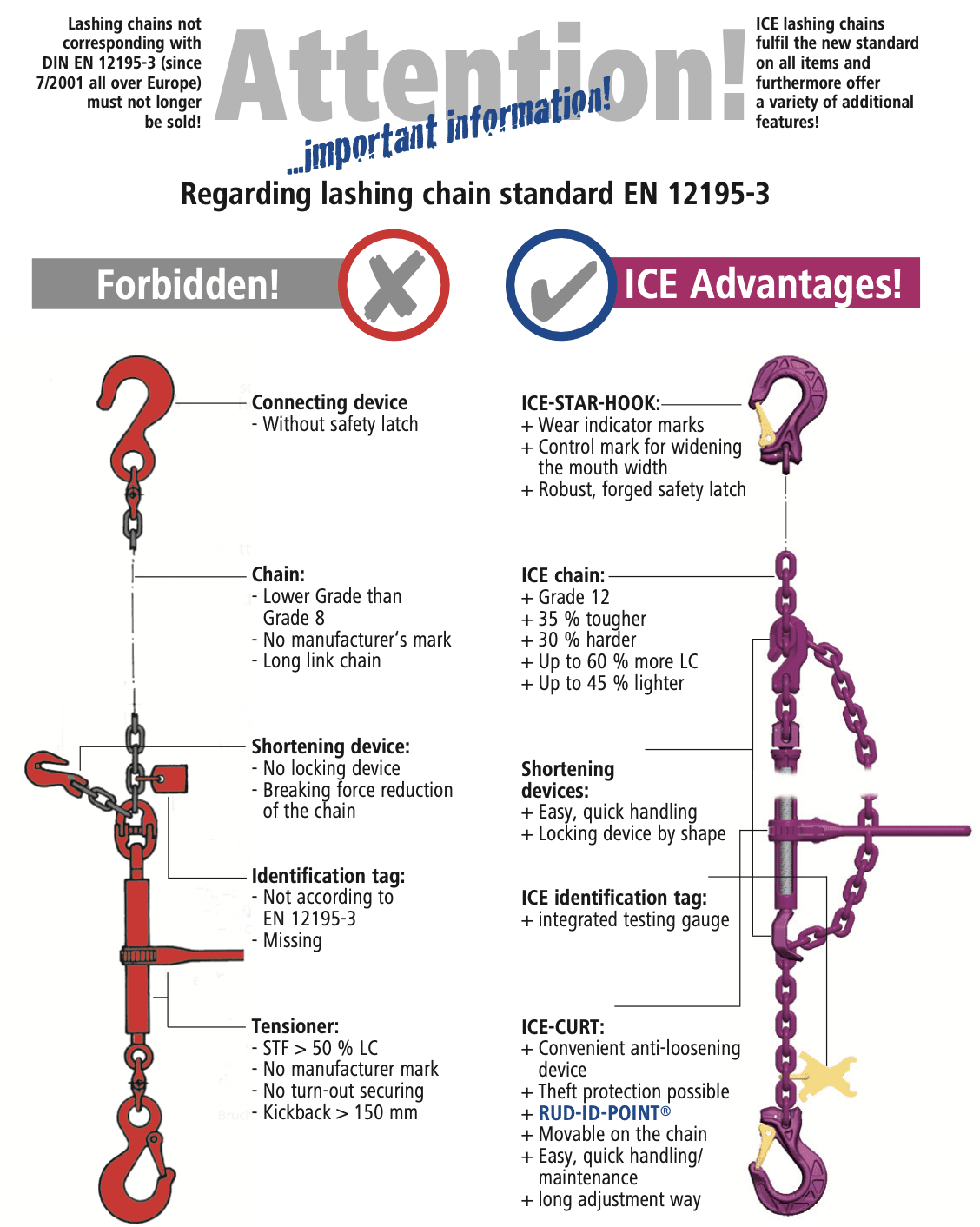
As you can see in the image above, it says under 'connecting device' that there must be a restraint on the hook of the lashing chain. The EN 12195-3 standard states that this is a requirement (referring to the 1677-2 for hoisting).
"Connecting and shortening components shall have a securing device against working loose."
This also applies when using the lashing chain to secure cargo. Quite extraordinary that when directly securing a load with chainwork, there should be a locking device on the hook, while this is not necessary with lashing chains.
Therefore, when securing cargo with lashing chains on a vehicle without lashing eyes, things often go wrong. As you can see in the practical illustration below, the hook of the lashing chain is inserted in the hole pattern of the edge beam. In this case, either the chain hook (because the latch does not close or is simply not on it) or the vehicle is unsuitable. Hooking onto the edge beam (without lashing points) with a chain hook is also not permitted, because here too (among other things) the locking is inadequate. In addition, you create point loads on the hook, possibly damaging it. Ultimately, the fuse or method (with or without locking on a hook) may work, but the lashing device does not meet the corresponding standardisation.
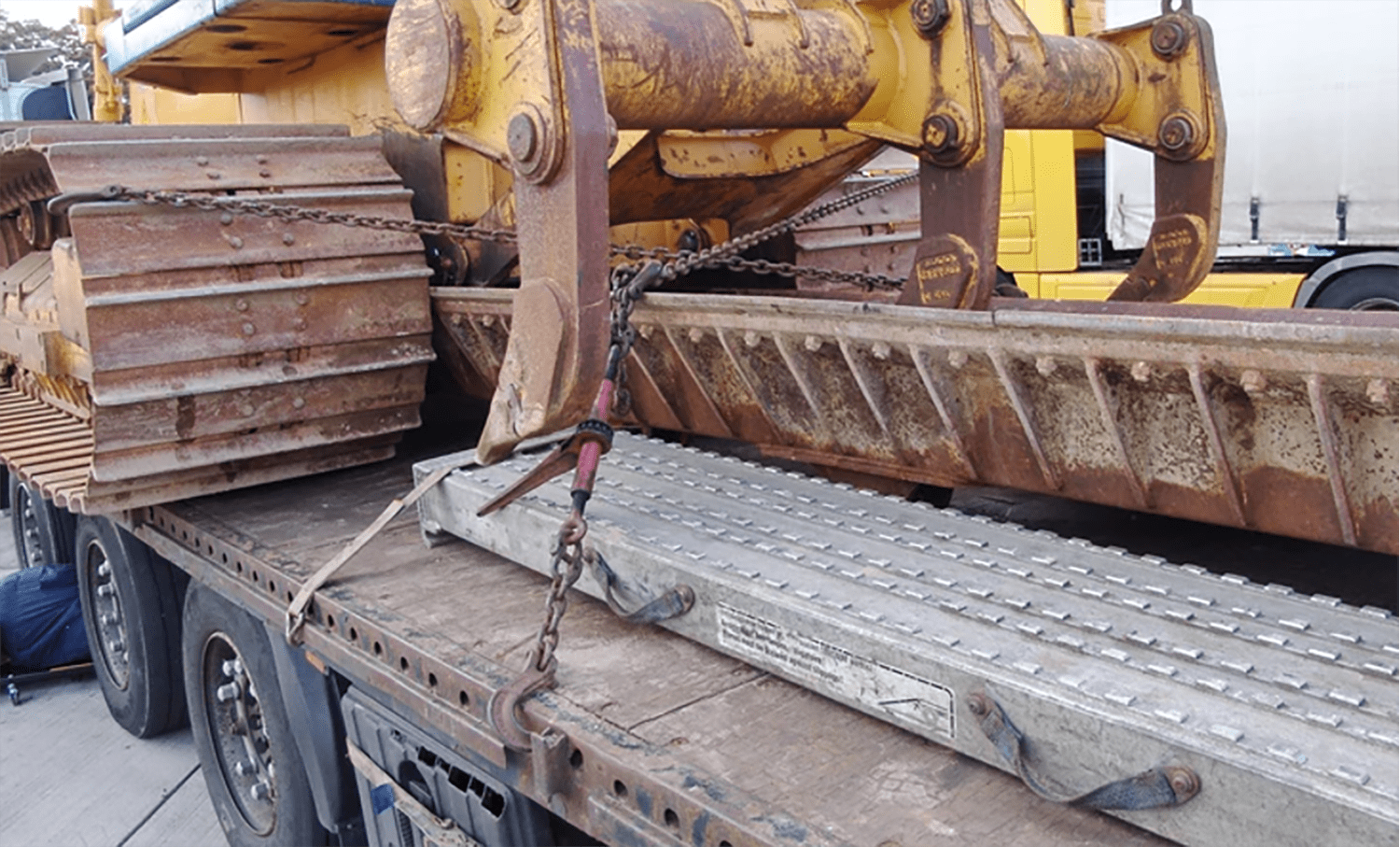
Locking pin mortise hook lashing chain
According to many, a locking pin on an lashing hook (see left image below) is a requirement. But this is only the case when the depth of the chain link is less than 5x the diameter and there is no radius or the hook is not secured by a suitable design. So many manufacturers have a locking pin on the notch hook. If you have a locking pin on your ink hook or the locking pin has been there, it will always have to function. In practice, the lifespan of the locking pin is quite short. When the locking pin is not present, the lashing system should also not be used. There are manufacturers who have designed the radius of the hook so that the chain always remains secured in the lashing hook and a locking pin is therefore not compulsory (see illustration on the right)!
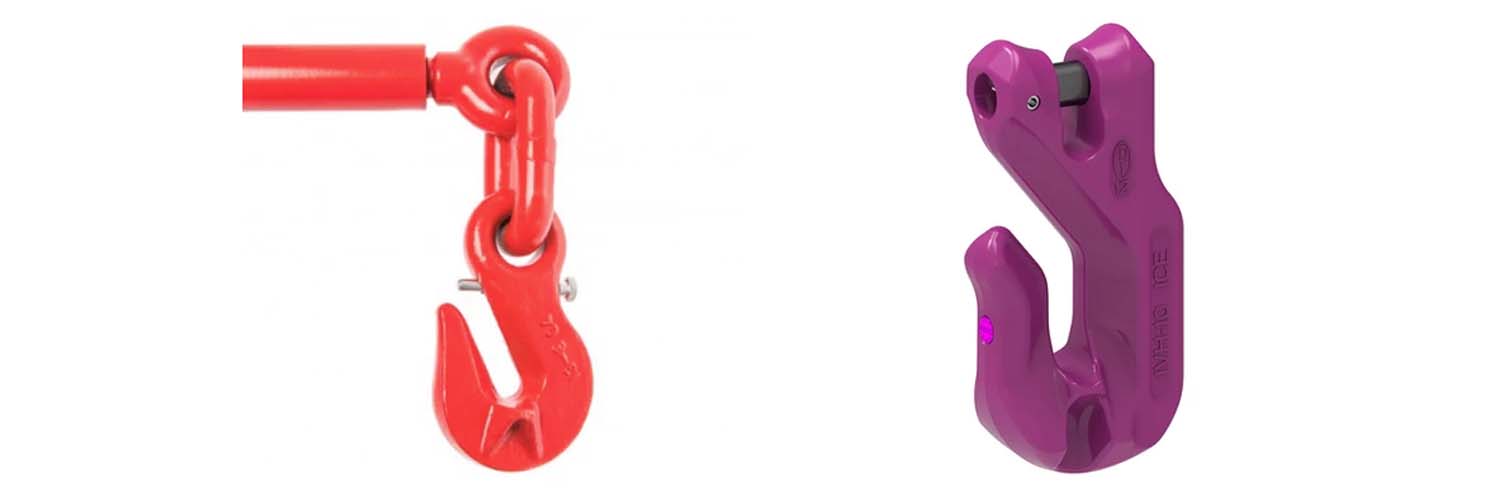
The chain
According to standard EN12195-3, the chain may only consist of short link chain with a minimum Grade 8. Furthermore, a short link chain may be a maximum of 3x the diameter.
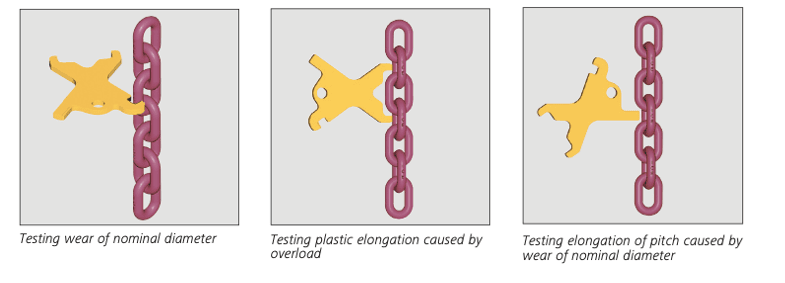
Chain tensioners
There are several manufacturers who have developed open chain tensioners, which prevent dirt and moisture from accumulating. The advantage of this is that you can see the spindles and they are easy to maintain.
Mixed assemblies chain system
When an independent inspector issues a certificate for a chain system composed of components from different manufacturers, no manufacturer will take responsibility for the composed 'new' product. Despite the fact that almost all lashing system manufacturers apply EN 12195-3 certification to their products, there are very large differences in quality. There may also be variants that do not comply with the standardisation at all. In particular, the identification requirement, the quality of the steel chosen and the accuracy of the heat treatment are decisive for the strength/fragility of the system, according to standardisation.
RUD lashing chains
An example of high-quality lashing chains for safely securing heavy loads are RUD's chains. RUD's lashing chains, known by their pink colour, are the highest quality of their kind. They meet all the requirements mentioned above. Take a look at the RUD lashing chains.


